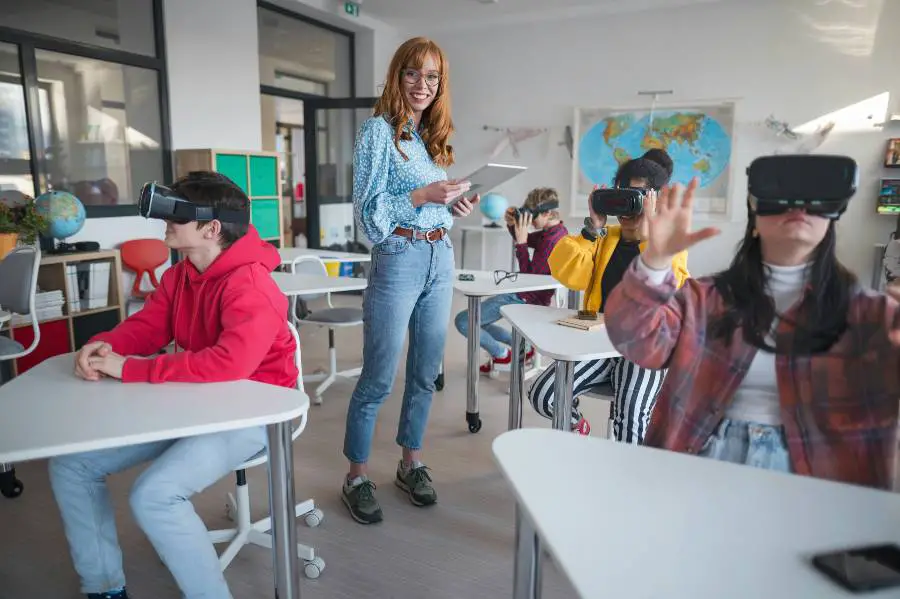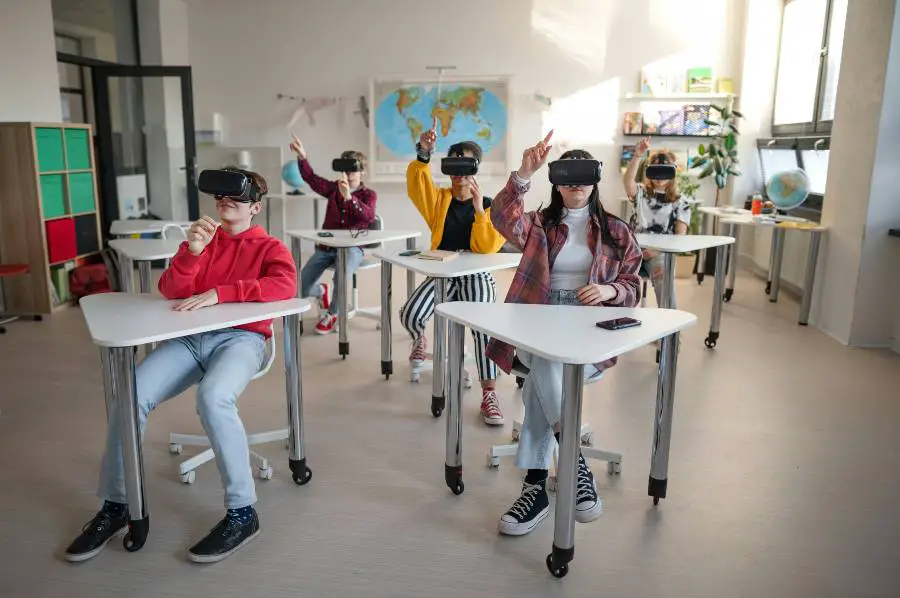Education is changing fast. New tools and methods are helping students learn better. One of the most exciting tools is Artificial Intelligence (AI). AI can make learning more fun and effective.
This article will explain how AI is used in education and how it helps students and teachers.
Key Takeaways
- Personalized Learning: AI creates customized learning plans for each student, allowing them to learn at their own pace and receive targeted support based on their individual needs and progress.
- Instant Feedback: AI provides real-time feedback on quizzes and assignments, helping students understand and correct their mistakes immediately, which keeps them engaged and motivated.
- Tutoring and Support: AI acts as a 24/7 tutor, offering homework help, explaining difficult concepts, and answering questions, which is especially beneficial for students who need extra assistance.
- Teacher Assistance: AI helps teachers by grading assignments, analyzing student performance, suggesting lesson plans, and managing classroom behavior, allowing teachers to focus more on teaching and student interaction.
- Interactive Learning Tools: AI-powered tools like smart classrooms, educational apps, and VR/AR technologies make learning more engaging and interactive, enhancing the overall educational experience for students.
How AI Helps Students
Personalized Learning
Every student is different. Some learn fast, while others need more time. AI can help by creating personalized learning plans. These plans are made just for each student. AI looks at how a student learns and what they need help with. Then, it gives them the right lessons and exercises. Therefore, students can learn at their own pace.
As you can imagine, personalized learning is like having a private tutor for each student. The AI system tracks the student’s progress and adjusts the lessons accordingly.
For example, if a student is good at math but struggles with reading, the AI will provide more reading exercises and fewer math problems.
Instant Feedback
Getting feedback quickly is important for learning. AI can give instant feedback on quizzes and assignments. When a student makes a mistake, AI can explain what went wrong and how to fix it, which helps students understand their mistakes and learn from them right away.
Instant feedback makes it possible for students to correct their errors immediately. Traditional methods of grading can take days or even weeks, but AI can provide feedback in real-time. Such immediate response helps students stay engaged and motivated.
They can see their progress and understand what they need to work on without waiting for a teacher to grade their work.
Tutoring and Support
Not all students can afford a tutor. AI can act as a tutor for free. AI tutors are available 24/7. They can help with homework, explain difficult concepts, and answer questions. Especially for students who need extra help.
With the help of AI, students can ask questions and get answers in real-time, just like they would with a human tutor. The constant support helps students build confidence and improve their understanding of the subject matter.
How AI Helps Teachers
Grading and Assessment
Grading takes a lot of time. AI can help by grading assignments and tests, which gives teachers more time to focus on teaching. AI can also analyze student performance. It can show which students are struggling and which ones are doing well. Teachers can use this information to help their students better.
AI grading systems can handle multiple-choice questions, short answers, and even essays. By analyzing student responses, AI can identify patterns and provide insights into student performance.
Then teachers can understand where their students are excelling and where they need more support. Based on this, teachers can tailor their lessons to meet the needs of their students.
Creating Lesson Plans
AI can also help teachers by suggesting lesson plans and activities. It can also provide resources like videos and articles. Teachers can use these resources to make their lessons more interesting and effective.
AI can analyze the curriculum and suggest lesson plans that align with educational standards. It can also recommend activities and resources that match the learning objectives. Together, AI saves teachers time and ensures that their lessons are well-structured and engaging.
Classroom Management
AI systems can monitor student behavior through various means, such as cameras and sensors. They can track attendance, participation, and even emotional responses.
In this way, teachers can know how their students are engaging with the lessons. If a student is struggling or not paying attention, the AI system can alert the teacher, allowing them to intervene and provide support.
AI Tools in Education
Smart Classrooms
Smart classrooms use AI to create a better learning environment. They have smart boards, interactive displays, and other high-tech tools. These tools make lessons more engaging. Students can interact with the lessons in new ways, making learning more fun.
Smart boards and interactive displays allow teachers to present information in dynamic and engaging ways. Students can interact with the content by touching the screen, answering questions, and participating in activities.
AI can also be used to control the classroom environment, such as adjusting the lighting and temperature to create a comfortable learning space. These smart tools make the classroom more interactive and enjoyable for students.
Educational Apps
Many educational apps use AI. These apps can help students learn math, science, languages, and more. They use games and quizzes to make learning fun. AI in these apps adapts to each student’s level, making sure they are always challenged but not overwhelmed.
For example, a math app might start with basic addition and gradually introduce more complex concepts as the student progresses.
Virtual Reality (VR) and Augmented Reality (AR)
VR and AR are exciting technologies that use AI. They can create immersive learning experiences. For example, students can take a virtual tour of ancient Rome or explore the human body in 3D. These experiences make learning more engaging and memorable.
VR and AR can also transport students to different places and times, allowing them to experience history, science, and other subjects in a new way.
For example, a history lesson might include a virtual tour of an ancient city, where students can explore the streets and buildings. A science lesson might include a 3D model of the human body, where students can see how different organs work.
Benefits of AI in Education
Better Learning Outcomes
AI helps students learn better.
Personalized learning plans ensure that each student gets the support they need. Instant feedback helps students correct their mistakes and learn from them. These factors contribute to better learning outcomes.
Students who use AI tools often perform better on tests and assignments. They also develop a deeper understanding of the subject matter, which helps them succeed in the long term.
More Engaged Students
Engaged students are more likely to participate in class, complete their assignments, and perform well on tests. AI tools make learning more interactive and enjoyable, which helps keep students engaged.
For example, a language learning app might use games and quizzes to make learning new words fun. A science lesson might include a virtual experiment that students can participate in. These interactive experiences make learning more enjoyable and help students stay motivated.















